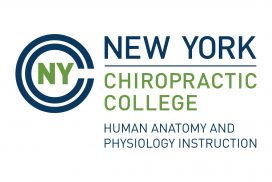The Eponym Episode: Using Modern Terminology
TAPP Radio Ep. 40 TRANSCRIPT
The A&P Professor podcast (TAPP radio) episodes are made for listening, not reading. This transcript is provided for your convenience, but hey, it’s just not possible to capture the emphasis and dramatic delivery of the audio version. Or the cool theme music. Or laughs and snorts. And because it’s generated by a combo of machine and human transcription, it may not be exactly right. So I strongly recommend listening by clicking the LISTEN button provided.
 This searchable transcript is supported by the
This searchable transcript is supported by the
American Association of Anatomists.
I’m a member—maybe you should be one, too!
Episode 40 Transcript
The Eponym Episode: Modern Use of Terminology
Introduction
Kevin Patton: The French anatomist Pierre Paul Broca once wrote, “The least questioned assumptions are often the most questionable.”
Aileen: Welcome to The A&P Professor, a few minutes to focus on teaching human anatomy and physiology with host Kevin Patton.
Kevin Patton: This episode focuses on different aspects of eponyms used in A&P.
What is an Eponym?
Kevin Patton: Welcome to The Eponym Episode. As that name implies, this episode is all about eponyms, what they are, how they’re used in A&P, and the pros and cons of using them. To get started, we need to answer the question, “What is an eponym?”
Kevin Patton: Well, in professional terminology, an eponym is a term that is based on a proper name, the name of a person. As we learned in the word dissection segment in the preview episode introducing this full episode, the word eponym can be broken apart into two main pieces: epo-, which means “upon,” and -nym, which means “name.” Translated literally, it means “name upon” or “named upon,” but really, a better translation, I think, would be “named for.”
Kevin Patton: For example, the term Parkinson Disease is an eponym. It’s a term that included the proper name of the physician James Parkinson, who’s credited with first describing the condition in detail. Another example is one I used in the preview episode, the loop of Henle, which is a kidney tubal segment named after the German anatomist who discovered it, Friedrich Henle.
Kevin Patton: As these examples imply, eponyms are often based on the name of the discoverer of the condition or the process or the structure represented by the term. But sometimes, eponyms are instead based on the name of a patient with the condition represented. For example, the Duffy blood group was named for the first patient in which this antigen was identified. I guess that was before HIPAA and all those restrictions on revealing patient names. Similarly, Legionnaires disease was named after the participants in an American Legion convention, where an early outbreak of that condition occurred.
Kevin Patton: As I mentioned in the preview episode that introduces this full episode, we often include toponyms in our list of eponyms. A toponym is a term derived from a geographical place name, not a person’s name. Like Lyme disease, for example, named after the Connecticut town where it was first observed. Or Ebola fever, named after the Ebola River, a tributary of the Congo River. Or even St. Louis encephalitis, which is caused by a mosquito-borne viral infection. Even though toponyms are not technically eponyms, I’m going to lump them together, which most people do most of the time anyway.
Kevin Patton: Now, the wonderful thing about eponyms is they get us thinking about the history of medical science, who the important characters were and how discoveries were made. But the downside of eponyms is that history and fascinating stories, well, they’re just not very useful in the moment that we need to use them. Because eponyms are terms that tend to obscure rather than clarify their practical meaning, they’re falling out of favor.
Kevin Patton: Eponyms are giving way to descriptive terms that more clearly summarize their working definitions. For example, it’s far more useful to call a brain region the motor speech area than it would be to call it the Broca area. The former tells, well it tells us both its location in the brain, the motor area of the cerebral cortex, and its function, that is, speech processing. But the latter version, that is Broca area, tells you who first described it, a brilliant guy with massive sideburns named Paul Broca, which is interesting, but it’s not immediately useful in the moment.
Kevin Patton: As much as I love saying islets of Langerhans out loud, and I truly do … Islets of Langerhans. It’s another one of those terms like carbaminohemoglobin that just, I don’t know, it has an attractive rhythm for me. Anyway, that term, islets of Langerhans, doesn’t tell anyone much about the actual structure, right? Okay, it tells me that they’re small and isolated, which I get from the term islet. However, the eponym derived from the name of Paul Langerhans doesn’t tell me where to find them or what they do or much of anything very useful.
Kevin Patton: But the term pancreatic islets tells me much more about them. Not everything of course, but a descriptive term like that tells me much more than does the eponym islets of Langerhans. In health professions, how accurately we communicate is important. Why? Because even a subtle miscommunication can result in a tragic mistake in providing the needed care to patients. In the end, the shift away from eponyms and toward more descriptive terminology may actually save lives.
Sponsored by HAPS
Kevin Patton: This podcast is sponsored by HAPS, the Human Anatomy & Physiology Society, promoting excellence in the teaching of human anatomy and physiology for over 30 years. Go visit HAPS at theAPprofessor.org/haps. That’s H-A-P-S. If you’re listening to this episode on your way to the joint HAPS and AACA Southern Regional Meeting in Louisville at the end of March 2019, why don’t you come to the workshop I’m giving there? It’s called Five Powerful Ways You Can Enhance Longterm Learning in Your A&P Course.
Modern Use of Eponyms
Kevin Patton: Don’t get me wrong. I love eponyms, even more so when I found out that Patton Glacier is named after my cousin Dick, so now I have a stake in eponyms. Except I guess I out to check Antarctica on Google Earth and see if Patton Glacier is even still there. Maybe it’s melted by now. In any case, I am a bit sad that eponyms, terms that include a proper name, seem to be going out of style in the world of human sciences.
Kevin Patton: The International Lists of Anatomic Terminology recommend against most eponyms, providing descriptive terms in their place. For example, pancreatic islet is the term preferred to the eponym islet of Langerhans. Osteon is preferred over haversian system. Of course, I get that. Descriptive terms are more intuitive, and therefore easier to understand and easier to learn and easier to remember.
Kevin Patton: Related to that is that they’re more accurate, especially when it comes to medical applications. Hey, I’m all about accuracy in the medical professions. It’s just fun using eponyms and sad to feel like I’m leaving behind all those wonderful women and men who discovered our parts way back when. But it’s not just the International Lists of Anatomy that are leaving eponyms behind. All the sources we think of as authorities, including most medical textbooks, are doing it. Professional societies, associations, and boards in the basic sciences and the health professions are doing it.
Kevin Patton: If we want to be in style with our terminology, and more importantly, make sure our students are sporting the latest linguistic style, we’d better pay attention to the trends, shouldn’t we? Let me give you some unasked for fashion tips if you want to be stylish in your use of professional terminology.
Kevin Patton: Tip number one is avoid eponyms. If there’s an accepted descriptive term, it’s best to use that rather than the eponym, right? Tip number two is be bilingual. Some folks you’ll encounter are old fashioned or possibly don’t know the newer descriptive term, or they know both and use them interchangeably. Because we’re on the cusp of a fashion revolution here, the most competent professionals will know both, and be able to switch back and forth easily as the context requires. The goal is to understand and be understood, right?
Kevin Patton: Tip number three, what to do if you have to use an eponym. Well, then use an eponym. There are some commonly used terms for which there really isn’t a great descriptive term to replace an eponym. For example, Parkinson disease, Alzheimer disease, and other disorders often don’t have a widely accepted alternative. Absolute avoidance of eponyms is not possible, at least not yet.
Kevin Patton: Tip number four, fashionable uses of eponyms. If you must use an eponym, the trendy folks at the American Medical Association and elsewhere avoid the use of possessive forms. For example, I don’t know if you were able to pick up how I used the term Parkinson disease in a previous segment, and not Parkinson’s disease. That is, I didn’t use the apostrophe S after the name Parkinson.
Kevin Patton: It’s better to use Down syndrome rather than Down’s syndrome. And even better to use trisomy 21 syndrome, or T21 syndrome, which is a little more descriptive than the eponym version. Likewise, the possessive loop of Henle is out of favor, but using Henle loop, that may still get you in to most of the trendy clubs. Of course, using the term nephron loop will leave no question about how hip you are when you’re trying to get in to those terminology clubs.
Kevin Patton: Tip number five, use back door eponym styles. When you try to get away with using a possessive form of an eponym, and yet still avoid arrest by the fashion police, you have to be very cunning. You have to slip in the back door of those trendy terminology clubs. Here’s a common way that’s done. Use the adjective form of a proper name.
Kevin Patton: If you want to honor Gabriele Falloppio’s work in describing uterine tubes, then use his Latinized name Fallopius in the form of an adjective and call them fallopian tubes. Uterine tubes is descriptive. Fallopian tubes is an eponym, but it sneaks Fallopius in there, so you might not guess that it’s really an eponym and not a descriptive term. But you might say, that’s not very clever masking of the fact that it’s still an eponym. In fact, it’s pretty obvious, right?
Kevin Patton: Well, here’s the sly part. Cover it up by using a lower case letter, thus obscuring the fact it incorporates a proper noun. That’s why many sources used fallopian tube with a small F instead of Fallopian tube with a capital F. Terms like eustachian tube and haversian canal with small case letters may not seem like well hidden eponyms in our context here, where we’re actually focusing on eponyms, but like most grand stage illusions, like Harry Blackstone’s making an elephant appear on stage from thin air, rely on that kind of subtle misdirection.
Kevin Patton: When you’re using an adjective form of an eponym, it’s best not to capitalize it and risk possible arrest by the fashion police. Of course, being slippery is not the real reason adjective forms of a person’s name are usually printed in all lowercase. It’s just the common style used universally in professional communication, even outside of science.
Kevin Patton: Let’s go on to tip number six, fashion rules are not really rules. With any fashion, the so-called rules are not usually rules in the formal sense. They’re just simple formulations of trends that, if heeded, will likely save you some embarrassment when you don’t appear to be very cool. If you have a good reason or even a lame reason to ignore these rules, I think you’ll probably survive. People laugh, even hoot, at my disregard for current clothing fashion all the time. You get used to it.
Kevin Patton: Let’s move on to tip number seven. This is the last one. Okay, sometimes fashion rules really are rules. As with any professional communication, sometimes fashion rules do get set in stone, in a required style to which you must adhere in your work, like a dress code for words. For example, students learn how to use professional styles when we require that they submit their assignments in APA or Chicago or CBE style. Likewise, in publishing, oh I don’t know, journal articles, books, other works, there are rules established that provide consistency, and therefore also accuracy. Each publisher, sometimes each journal or each textbook, has it’s own house style that defines such things. If your journal editor insists on Eustachian tube with a capital E instead of auditory tube or eustachian tube with a lower case E, well then I recommend doing it. Retro, in some contexts, can be cool.
Sponsored by AAA
Kevin Patton: A searchable transcript and captions for the audiogram of this episode are funded by AAA, the American Association of Anatomists, at anatomy.org. Hey, if you’re listening to this episode as you prepare for the Experimental Biology meeting in Orlando in early April 2019, may I ask a big favor of you? Can you tell just one other person who teaches A&P about this podcast while you’re there? Just tell them to search for The A&P Professor or for Kevin Patton in the app store of their device. Oh, and mention to the staff and leadership of AAA that you appreciate their support of this podcast.
Another Problem with Eponyms
Kevin Patton: Another potential problem with eponyms has to do with the people themselves. For example, recent discussions of Hans Asperger have expressed concerns about a potentially complicated relationship he had with the Nazi idea of race hygiene. Although named for him, the condition Asperger syndrome or AS may have been first described two decades earlier by a Russian woman working in the field of child psychology. Her name was Grunya Efimovna. Besides that, the Asperger eponym has been dropped from the ICD, that is the International Classification of Disease, and the DSM, that’s the Diagnostic and Statistical Manual of Mental Disorders, in favor of a new range of conditions under the umbrella term autism spectrum disorder or ASD.
Kevin Patton: In general, the ICD and DSM usually consider eponyms as secondary alternatives to what they would consider the proper disease terminology. There are several issues at play with terms like the Asperger eponym. One is the fact that many, perhaps most eponyms recognize the individual with the best awareness ratio, the most aggressive supporters, and probably mostly lucky timing, not necessarily the person or persons most disturbing of the recognition. Another issue is the fact that we don’t want to be reminded of Nazi ideology or atrocities when we’re using scientific or medical terminology, nor are we anxious to honor individuals who may have used morally questionable methods or have some other unsavory qualities.
Kevin Patton: Yet another potential issue with such eponyms is that they may reflect another dark underbelly of the history of science. That is the dominance of European men. For example, Asperger syndrome may have been first described by a woman, but the condition was named for a man. This particular case is probably more about the luck of timing and the particulars of the awareness of the existing literature at a time when scientific reports were not as easily accessed across the globe as is the case nowadays.
Kevin Patton: And yeah, there are a few eponyms based on a woman’s name. For example, Yvonne Barr gave her name to the Epstein-Barr virus, and there’s Virginia Apgar, who developed the Apgar score, but those are few and far between. It can’t be denied that most eponyms are named for men, and that probably reflects the historical exclusion of women from science and from scholarly endeavor in general.
Kevin Patton: A number of discussions have also questioned why many anatomical structures that are uniquely female are named with eponyms that honor men, such as Fallopius or Bartholin, Skene and so on. And what about eponyms based on the names of the Europeans credited with scientific discovery, but really the first discovery occurred in Asia or Africa, maybe generations earlier. Western science may not have known about such discoveries at the time they were enshrined into eponyms, at least in some cases, but as we become more and more aware of the true history, isn’t it awkward to keep them?
Kevin Patton: After all, words matter. If we keep repeating a mistake in forming an eponym, aren’t we thumbing our noses or worse at certain classes of people? Even if that’s not our intent? I know, sometimes we’re too sensitive about such things, but more often, I think, we’re not sensitive enough. If I know I’m hurting people or helping to keep outsiders outside, why would I want to keep doing it? Maybe this is best solved by … Yes, you guessed it, dropping the use of eponyms entirely.
Sponsored by HAPI Online Graduate Program
Kevin Patton: Distribution of this podcast is sponsored by the Master of Science in Human Anatomy & Physiology Instruction, the HAPI degree. Yeah, I know. You’re already familiar with a lot of the content of an A&P course, but are you fully trained in how to most effectively teach that content? Check out this online graduate program at nycc.edu/hapi. That’s H-A-P-I, or click the link in the show notes or episode page.
How to Deal with Eponyms in Our A&P Course
Kevin Patton: Okay. After all this, how should we deal with eponyms in our A&P courses? My preference would be to just drop eponyms entirely. Really. But I can’t do that. Why? Because my students are headed off to nursing school or medical school or any one of a number of other health-related profession, and their instructors, their clinical supervisors and future employers will still be using a lot of eponyms. If my students have never heard these before, it’s going to work against them in several possible ways.
Kevin Patton: For example, my former students might be unnecessarily confused and agitated as this keeps happening to them. Of course, I don’t want them resenting me for the rest of their lives because of it, but that’s not what’s important here. What’s important is that it’s going to be an impediment to their success. Another issue is that all those instructors and clinical supervisors and employers are going to think my former students are undereducated dummies, and that’s not going to do much for their professional success.
Kevin Patton: And while I’m going way far off into the field of what-ifs, I might as well mention that students that don’t know a basic set of key eponyms could get confused when they hit real life after A&P, when they’re working health professionals and taking care of me or my family, and they make some minor mistake, because the eponyms have confused them, and for that moment, they can’t remember what’s what. And it ends up maiming or killing me or mine. Then I’ll really regret not teaching them any eponyms, right?
Kevin Patton: How do I pull off being fashionably anti-eponym, training students who are also fashionably anti-eponym, while also preparing them for the real world, where eponyms still exist? Well, it gets back to that fashion tip of being bilingual. What I do is focus on the descriptive terms, I teach them the fashion rules of using those while avoiding eponyms, but I also teach them many of the eponyms. Sure, it’d be easier for students if they didn’t need to know at least two alternate terms for a lot of anatomical structures or diseases, but we all deal with synonyms on a daily basis, and our brains seem pretty well equipped for that.
Kevin Patton: Hey, if my aging brain can keep up with it, just about anybody’s can. I’m also going to make sure that my students know why descriptive terms are better than eponyms and why they should be our first choice. If we teachers all make this effort, the transition away from eponyms will happen faster than if we continue to focus mainly on those old eponyms. Think about it.
Kevin Patton: As usual, I have a lot of links in the show notes and episode page if you want to dive deeper into the topic of eponyms. Have any comments or questions about using eponyms in A&P? Got a good idea on how to deal with them in the A&P course? You want to give me grief for giving up on poor old Paul Langerhans? Well good, I want to hear from you. We all want to hear from you. Just call the podcast hotline at 1-833-LION-DEN. That’s 1-833-546-6336. Or send a message at podcast@theAPprofessor.org.
Aileen: The A&P Professor is hosted by Kevin Patton, professor, blogger, and textbook author in human anatomy and physiology.
Kevin Patton: If you experience any adverse side effects, please discontinue listening to this podcast and call your doctor.
This podcast is sponsored by the
Human Anatomy & Physiology Society

This podcast is sponsored by the
Master of Science in
Human Anatomy & Physiology Instruction

Stay Connected
The easiest way to keep up with new episodes is with the free mobile app:


Or you can listen in your favorite podcast or radio app.
Click here to be notified by blog post when new episodes become available (make sure The A&P Professor option is checked).
Call in
Record your question or share an idea and I may use it in a future podcast!
Toll-free:
1·833·LION·DEN
(1·833·546·6336)
Local:
1·636·486·4185
Email:
podcast@theAPprofessor.org
Share

Preview of Episode 41

Introduction
Kevin Patton: Hi there. This is Kevin Patton with a brief audio introduction to episode 41 of the A&P Professor podcast, also known as TAPP Radio, an audio medicine show and revival meeting for teachers of human anatomy and physiology.
Topics
Well, in episode 41, it turns out that we’re revisiting and updating some interesting topics from past episodes. For example, I have a brief update on growing new neurons in the adult brain. Yes, that again. And there’s more on finding media to use in teaching A&P. That was sparked by a question from listener Adam Rich. And the featured topic is more on eponyms in A&P terminology, featuring a contribution by Mike Pascoe. And speaking of names, I’ll have a brief segment on what we call our students. That’s all in the upcoming full episode, which is episode 41.
Sponsored by HAPI
Kevin Patton: The free distribution of this podcast is sponsored by the master of science in human anatomy and physiology instruction, the HAPI degree. If your training didn’t include teaching practice, or didn’t include both anatomy and physiology of all the major body systems, then you may want to check out this online graduate program at nycc.edu/hapi, that’s H-A-P-I, or click the link in the show notes or episode page.
Word Dissections
Kevin Patton: Well, it’s time for some word dissections, and since this is a recurring segment, I was thinking, maybe I need some kind of a snappy jingle or something to play during this part. No, now that I’m saying it out loud, giving it more thought, maybe that’s not such a good idea. Well anyway, I have two terms that are going to be coming up in the full episode. The first term can be pronounced either of two different ways: duodenum or duodenum, and as you know, that’s the first major subdivision of the small intestine. Duodenum is derived from the Latin word duodeni, which means 12, but it’s actually shortened from a longer Latin phrase, which is intestinum duodenum digitorum, or the twelve finger widths of the intestine, and it kind of gets that name because it’s that first very short segment of the small intestine.
Kevin Patton: It’s only 12 finger widths. That’s sort of the implication, is it’s only 12 finger widths, and of course, that’s not necessarily literally true. That’s going to vary from person to person, not only in length of duodenum, but in the width of the fingers. I mean, whose fingers are they? And what’s interesting to me is why do they have 12 of them? I mean, I only have 10, and I know some people have more than that, but that’s the exception rather than the rule, so why did somebody think that that was a handy way, and forgive the pun there, a handy way to label this segment? You always have to borrow two extra fingers, don’t you? To kind of figure out where that is?
Kevin Patton: I mean, of course, you don’t have to figure out where it is, because the C shape of it tells you where it is, but to me, this whole thing just seems like an odd way to name that segment. But of course, I have an odd outlook on just about anything myself, so who am I to say? By the way, the plural of the term duodenum, or duodenum, is duodena. That is with an A. But duodenums, or duodenums, is also acceptable, so it’s one of those where we can either revert to the Latin way to make something plural or use the English way, by just adding an S.
Kevin Patton: Our second term is hippocampus, and as you probably know, that’s a fold of the cerebral cortex that, on a cross section, sort of resembles a seahorse, and it forms part of the limbic system, or emotional brain. And if we break it down, well, I think I’ve kind of spoiled the surprise here if you don’t know what hippocampus means literally. The first part, hippo, means horse, and you might think, “Wait a minute,” you know? “What about a hippopotamus. That’s what I think of, not a horse.” Well, yeah. Hippopotamus comes from hippo, horse, and potamus, which means river, so it’s a river horse. And if you’ve ever seen a hippo, either at a zoo or in the wild, they are big, sort of like a horse, and they kind of hang out near rivers, or at least bodies of water. Not just near them, but also in them.
Kevin Patton: So hippo, that first part, means horse, and the last part, campus, means sea monster, so hippocampus literally means sea monster horse, or we can interpret it as seahorse. So once you know that meaning, it’s kind of easy to remember sort of what it looks like in a lot of diagrams and preparations of the hippocampus.
Sponsored by HAPS
Kevin Patton: This podcast is sponsored by HAPS, the Human Anatomy & Physiology Society, promoting excellence in the teaching of human anatomy and physiology for over 30 years. Go visit HAPS at theapprofessor.org/haps. That’s H-A-P-S. I’ll be at the HAPS annual conference in Portland, and I hope to see you there too.
Book Club
Kevin Patton: In case you were wondering, yes, yes I do have a recommendation from the A&P Professor Book Club. It’s a book that I’m just finishing up, and I’ve really enjoyed it. It’s called Skeleton Keys: The Secret Life of Bone. It’s written by Brian Switek, who has a paleobiology background, and that’s a little bit different perspective than I think many of us who are teaching A&P have. I think that works out great, because he’s telling the story of bone from a slightly different angle than many of us would be coming from on our own, and I think that’s going to give us a fresh perspective, and a different way of looking at many different aspects of bone.
Kevin Patton: And speaking of storytelling, I am … Yeah, I’m coming back to that again. Long-time listeners know that storytelling is a big deal for me, because I think that when we’re teaching A&P, or teaching anything for that matter, we need to think of ourselves as storytellers, and not just in giving lectures, or mini-lectures, or explanations, but in every aspect of putting our course together and providing resources for students. It is a story. It’s the story of human structure and function.
Kevin Patton: In this book, Brian Switek is telling the story of bone, and of course, because he’s writing a book, it is more obviously written in a storytelling format, and that’s part of what makes it so interesting, but for me, the most interesting part is how he is approaching even some of the basic ideas of bone, that we’re teaching in our own class: the basic structure of bone, the basic function of bone, how bone interacts with other parts of our body, and what role it plays in helping us do what we do as humans to stay alive. And what it has done for me is give me some other ways to look at that story, that I will likely be incorporating in my own story of bone.
Kevin Patton: So, not only is it a good refresher of the basics of bone, but because it’s being told in a storytelling format and from a different angle than I would have come from, it’s going to be a great resource for, I think, all of us who are teaching A&P, to hear it from somebody else’s perspective. But not only that, there’s a lot of the paleobiology stuff and so on that I didn’t know, or I was just barely aware of, and didn’t realize how important it is in the story of bone, and I might be adding a little bit of that into my own story in A&P. Now, I’m going to have to figure out how to do that without my course becoming a bone course. So, if you want to take a look at this book, go to theapprofessor.org/bookclub, or just hit the link in the show notes or episode page and take a look at this book. I highly recommend it. It’s been a fun read.
Sponsored by AAA
Kevin Patton: A searchable transcript and a captioned audiogram of this preview episode are funded by AAA, the American Association of Anatomists, at anatomy.org, and I want to give a special shout-out to all my friends who are at the AAA conference at the Experiment Biology meeting in Orlando right now. Okay, I’m not going to actually shout, just wish y’alls a good adventure.
Kevin Patton: Well, this is Kevin Patton signing off for now, and reminding you to keep your questions and comments coming. Why not call the podcast hotline right now at 1-833-LION-DEN? That’s 1-833-546-6336. Or visit us at theapprofessor.org. See you down the road.
Last updated: September 22, 2021 at 19:36 pm




